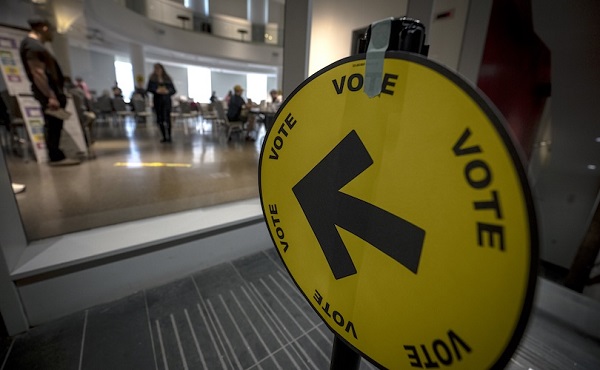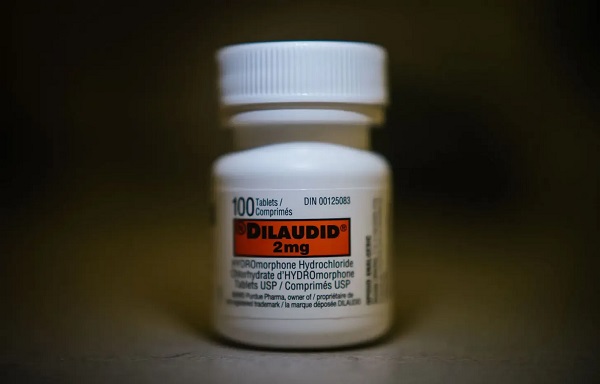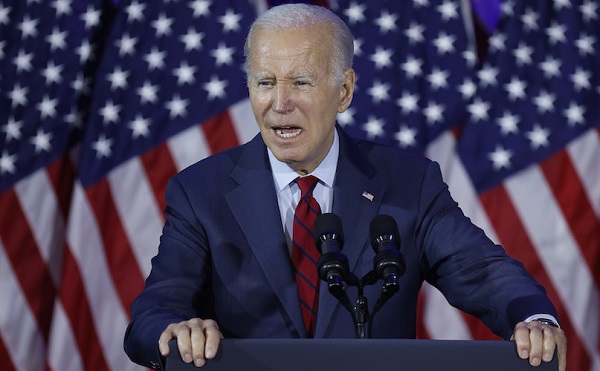Opinion
Someone Needs Replacing at Red Deer Catholic Regional Schools

Once you put children safety at risk… I can’t be silent any longer.
From charitable tax receipts not being issued correctly… to having private information of your child’s educational performance being stored and “pushed” to you by foreign apps that you must agree to their terms saying that information is processed by foreign servers, to hearing wasteful spending radio ads, to leaving an entire bus route of elementary school children stranded for nearly an hour while their “bus status app” says “all buses on time”.
Yes, this is what the RDCRS has to offer you in just this past year alone.
I ran for trustee in 2013, so sure, some might try to spin this as sour grapes, but when you are tired of administrators that have stopped focusing on children and have become more focused on child recruitment, you have a problem. I ran for a trustee position to prevent this very type of thing going on, and here we sit.
Don’t get me wrong, I love the teachers, their assistants, and staff doing everything to help the children. But something needs to be done at the top.
Charitable Receipts
To be eligible for a charitable donation credit, all tax receipts must have the Registered Charity number on them. This is a 9-digit number followed by “RR” and then 4 more digits. Every single RDCRS receipt received by my accounting firm this past tax season was missing this number. This was raised by yours truly to their office on behalf of my clients. They did not reissue replacements until I pushed back repeatedly and individually per client. They said over the phone they would not be mailing out replacements for everyone. So, if you donated this past year, enjoy your reassessment.
Performance Reports
We all want to know how our child(ren) is(are) doing in school. This past year RDCRS decided to launch the use of PowerSchool LLC. They say all of your child’s information is held on Canadian servers. However, when you go to sign up for the app it says that the app uses foreign servers for you to access, view, and receive notifications on, your child’s performance. This is how a foreign app works.
While you may store information in Canada, it is being sent through other connections and servers in a foreign country like the United States. While I’m fine seeing pictures on social media or getting the quick note from a teacher about what “little Johnny” did today… when it comes to academic performance and review, privacy and security steps should be taken. When I raised this concern with the superintendent, his response is that commercial privacy laws do not apply to them.
In my request I stated:
“Further to my previous e-mail: although PIPEDA may not apply to RDCRS directly, by engaging a corporate entity, you are required under FOIP S.38 and 39(1) to have proper controls in place which would require our consent. The corporate entity PowerSchool LLC is to be bound by PIPEDA as well as the stricter Alberta version, PIPA, as it is not a government agency. The app from the Canadian version of the app store that you have instructed parents to use to access is warning us upon installation that the data is being routed via PowerSchool LLC’s US resident servers. This is not a violation of PIPEDA by PowerSchool LLC directly, as they are requesting our permission on installing the app. This warning does not exist unless you are in Canada. This is not a “default”, this is a requirement by PowerSchool for any notifications to Canadian resident users.
However, the letter sent to parents states that we are required to sign up, or we will not receive information. Requiring parents to use the app in order to access report cards and information on our children is not allowing for our consent, it is being forced. A government department forcing a parent to accept a foreign corporation’s “terms of service agreement” is in violation of FOIP.”
His response:
“In your message you reference Sec. 38 and 39(1) of the FOIP Act. Our school division is in compliance with these sections of this Act as we have proper controls in place because our student data is housed on our servers. We protect personal information by using reasonable security arrangements against risk of unauthorized access. As a result parent consent is not required.”
So parent consent is not required with the school division, but yet parent consent is required by the corporate entity, which then routes the data from Canada through their U.S. server. However, if you don’t consent, you don’t get updates other than a final report at the end of the “reporting term”. Sounds like forced consent to me. Why would I want to have my child’s personal and private information sent through a foreign country?
Radio Ads
Instead of focusing on children that they have, they would rather recruit more children instead. During the 2013 election, I was amazed how a former trustee chair stated, “if we convert just one child to Catholicism then it [advertising] is worth it.”
Apparently, conversion is more important than the education of the children already there.
I have asked how much was spent on advertising but the only response I received was “fill out a freedom of information request. There will be fees associated with it because it is not your personal information.”
How many textbooks could we have purchased for the amount they spend on advertising in a year? I’m sure many parents would like to know.
This brings me to today.
Transport
An entire bus route of elementary school children did not get picked up today. Instead, they were sitting outside for 45 minutes when my children contacted me in panic tears and said the bus didn’t come. Like any parent, at first, I was questioning my kids… then worried for other children… then mad.
Why did I get mad?
Well, you see the RDCRS has a wonderful “app” that is supposed to notify parents if a bus is canceled or running late. But the status for the route said “On time”.
So I asked my kids if they missed the bus, they said no, because the other kids at their stop were there too.
When I picked up my children (and one of the neighbour’s kids after getting permission from her parent) we continued along the route and saw many more children waiting along the route. We pulled over to tell them to contact their parents as it appears there is no bus.
When I arrived with my children at the school I informed them of the issues. Now, to the school’s staff credit, the school responded quickly and the vice principal drove the route to check the safety of the kids.
However, when I called the transport office, which is owned and run by RDCRS, they stated that they “had a no-show and only found out now.” They still did not update the bus status on the app and this was one hour after the route was to begin.
Every employer has some sort of attendance system. Couriers use radios and GPS to track vehicles and routes. But somehow the RDCRS transport office doesn’t have a way to track if a driver showed up to work or not? Or if a bus is on a route or not?
Then what is the point of an app to notify parents if you don’t use it?
I’ve been relatively quiet publicly on these things, but today, when you put children safety at risk, it was the last straw.
National
Liberals push to lower voting age to 16 in federal elections

From LifeSiteNews
Liberals in Canada, led by MP Nathaniel Erskine-Smith, are petitioning to lower the federal voting age to 16, arguing that ‘informed’ youth should have a voice in elections.
Liberals are petitioning for high schoolers to be allowed to vote in federal elections.
In a July petition introduced to the House of Commons by Liberal MP Nathaniel Erskine-Smith, Liberals are pushing for the voting age for federal elections to be reduced from 18 years old to 16 years old, arguing that youth need a voice in society.
“Sixteen and seventeen-year-olds across Canada are already taking on real responsibilities, from working part-time jobs and paying taxes, to driving, volunteering, and taking on family responsibilities,” the petition stated.
“Young Canadians are informed, thoughtful, and actively involved in their schools, communities, and movements that shape our country’s future,” it continued.
“Extending the voting age to 16 would empower a new generation to participate in democracy while still in school, where habits of civic engagement are more easily built and supported,” the petition declared.
Interestingly, the Liberals’ push to decrease the voting age in Canada comes at a time when young Canadians are increasingly voting Conservative.
In 2015, former Prime Minister Justin Trudeau was wildly popular with Canadian youth, receiving the majority of the young vote and visiting high schools across the country.
However, in the 2025 election, young Canadians favored the Conservative party, which received 41 percent of the votes from Canadians aged 18-34, while Liberals only received 37 percent from the same demographic.
The political shift is largely attributed to rising costs of living, including food and housing, under the Liberal administration.
Trudeau’s carbon tax, framed as a way to reduce carbon emissions, has cost Canadian households hundreds of dollars annually despite rebates. According to the Parliamentary Budget Officer, this year, the tax will cost the average Canadians family up to $911 more this year than they get back in rebates.
Additionally, in 2024, Food Banks Canada reported that 2 million visit food banks each month, a 90% increase from 2019.
Furthermore, directly following a report that Canada’s poverty rate increased for the first time in years due to high inflation spurred by government spending, polls showed that nearly half of Canadians are only $200 from complete financial ruin, and yet Liberals refused to change their policies.
Addictions
After eight years, Canada still lacks long-term data on safer supply

By Alexandra Keeler
Canada has spent more than $100 million on safer supply programs, but has failed to research their long-term effects
Canada lacks long-term data on safer supply programs, despite funding these programs for years.
Safer supply programs dispense pharmaceutical opioids as a replacement for toxic street drugs.
There is a growing body of research on safer supply’s short-term health effects. But there are no Canadian studies that evaluate program participants’ health impacts beyond 18 months.
The absence of research into long-term data on safer supply means policymakers do not understand how safer supply affects participants’ health, substance use or social outcomes over time.
“Long-term data is important because it helps us understand not just short-term health outcomes like reduced overdoses, but also broader impacts on quality of life, stability and health care use,” said Farihah Ali, scientific lead at the Institute for Mental Health Policy Research at CAMH. The Centre for Addiction and Mental Health is one of Canada’s leading centres for addiction research and clinical care.
Pilot projects
Canada’s first safer supply programs were introduced in Ontario in 2016. Those programs were initially small in scope, intended for a small group of high-risk individuals.
In 2020, the federal government began funding safer supply pilot programs across the country. Provinces are responsible for the delivery and regulation of these programs.
B.C. introduced provincewide programs in 2021. Other provinces, such as Alberta, have restricted safer supply access to a very small number of clinics, and have generally shifted away from harm reduction models in favour of recovery-oriented approaches.
According to the Canadian Public Health Association, an advocacy organization, the original goal for safer supply was to reduce deaths and harms associated with the unregulated toxic drug supply. It was not meant to replace addiction treatment, but to rather act as a bridge to further care.
However, a 2023 report by researchers at McMaster University and Simon Fraser University noted safer supply “does not principally operate toward goals of treatment or recovery.” The report describes safer supply instead as an emergency intervention focused on stabilization and survival.
Evidence gaps
There is a small but growing body of short-term studies on the health effects of Canada’s safer supply programs. Most only track participants’ outcomes for up to 12 months.
Some of those studies suggest safer supply may reduce the immediate harms associated with drug use.
A 2024 study found a 91 per cent reduction in the risk of death among high-risk individuals receiving safer supply in B.C. Critics have raised concerns about the study’s methodology, sample size and confounding variables.
In contrast, a March study suggested B.C.’s safer supply and decriminalization policies may be associated with increased hospitalizations. These findings also sparked controversy, with experts debating how well the data isolate causal impacts.
And a comparative study released in April also showed some positive outcomes from safer supply. It too sparked significant expert debate.
‘Arms-length’
Of all the provinces, B.C. has implemented safer supply most broadly. The province’s health ministry did not directly respond when asked about the long-term goals of its safer supply program, or whether B.C. collects longitudinal data on program participants’ health outcomes.
“Evidence shows [safer supply] helps separate people from the unregulated drug supply, manage their substance use and withdrawal symptoms with regulated medications, and helps connect them to voluntary health and social supports,” a Ministry of Health spokesperson told Canadian Affairs in an email.
The ministry did not provide the evidence it referenced.
At the federal level, Health Canada confirmed that, to date, it has funded just two evaluations of safer supply programs, despite spending more than $100 million on safer supply since April 2023.
The first was a short-term study, funded by the federal government’s Substance Use and Addictions Program program. Conducted over four months, that study assessed 10 safer supply programs in Ontario, B.C., and New Brunswick. It documented initial impacts on participants’ lives and program delivery, primarily through qualitative methods such as interviews and surveys.
The second study is an ongoing, “arms-length evaluation” of 11 safer supply pilot programs funded by the Canadian Institutes of Health Research (CIHR), Canada’s federal health research agency.
When asked about long-term research on safer supply, Health Canada referred Canadian Affairs to a 2022 funding announcement about this multi-year evaluation. While the evaluation is being conducted over several years, it is unclear if it includes long-term tracking of patients’ outcomes.
Barriers and resistance
There are a number of factors that make it challenging to evaluate safer supply programs over long periods.
Ali, of CAMH, says unstable, short-term funding can disrupt long-term research.
“When programs are shut down or scaled back, we lose contact with participants and the ability to track outcomes over time,” she said.
Program participants can also be difficult to track over long periods, she says. Many struggle with housing insecurity, health instability and criminalization.
Frontline staff also face burnout and high turnover, she says, limiting support for such research activities.
Additionally, there are tradeoffs between the anonymity needed to encourage patients to access safer supply programs and the ability to collect detailed data.
“Ethical concerns — like not wanting to burden participants or risk their safety or confidentiality — require us to design studies that are trauma-informed and flexible, which adds complexity to long-term data collection,” Ali said.
Julian Somers, a clinical psychologist and professor at Simon Fraser University, says B.C.’s failure to conduct long-term evaluations of its safer supply programs is not just an oversight, but an act of negligence.
“B.C. has some of the best pharmaceutical data systems in the world,” Somers said, referring to PharmaCare and PharmaNet — databases that capture every prescription drug transaction in the province.
Somers says his team previously used PharmaNet data to examine prescribed opioids’ effects on health and social outcomes. In 2017, he proposed a long-term safer supply evaluation using these tools.
In 2017, he proposed a long-term evaluation of B.C.’s safer supply programs.
The province declined.
According to Ali, “Future research should explore how safer supply impacts people’s long-term health, stability and connection to care.”
“We also need to listen to people’s experiences, how safer supply affects their daily lives, their sense of dignity, and their relationships with care providers through qualitative mechanisms.”
This article was produced through the Breaking Needles Fellowship Program, which provided a grant to Canadian Affairs, a digital media outlet, to fund journalism exploring addiction and crime in Canada. Articles produced through the Fellowship are co-published by Break The Needle and Canadian Affairs.
-

 National2 days ago
National2 days agoCanada’s immigration office admits it failed to check suspected terrorists’ background
-

 Crime1 day ago
Crime1 day agoDEA Busts Canadian Narco Whose Chinese Supplier Promised to Ship 100 Kilos of Fentanyl Precursors per Month From Vancouver to Los Angeles
-

 Alberta2 days ago
Alberta2 days agoAlberta ban on men in women’s sports doesn’t apply to athletes from other provinces
-

 Business1 day ago
Business1 day agoCanada must address its birth tourism problem
-

 Alberta1 day ago
Alberta1 day agoMedian workers in Alberta could receive 72% more under Alberta Pension Plan compared to Canada Pension Plan
-

 International1 day ago
International1 day agoBiden autopen scandal: Did unelected aides commit fraud during his final days in office?
-

 Business1 day ago
Business1 day agoConservatives demand probe into Liberal vaccine injury program’s $50m mismanagement
-

 Fraser Institute1 day ago
Fraser Institute1 day agoDemocracy waning in Canada due to federal policies






